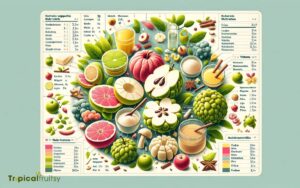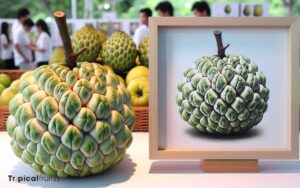Sugar Apple Vs Custard Apple: A Comprehensive Comparison!
Sugar apple (Annona squamosa) and custard apple (Annona reticulata) are two distinct fruits within the Annona genus, offering unique flavors, textures, and nutritional benefits.
Known for their sweet taste and creamy texture, these tropical fruits are not only different in appearance but also in their botanical characteristics and culinary uses.
Sugar apples and custard apples are both tropical fruits from the Annona genus but differ in several ways:
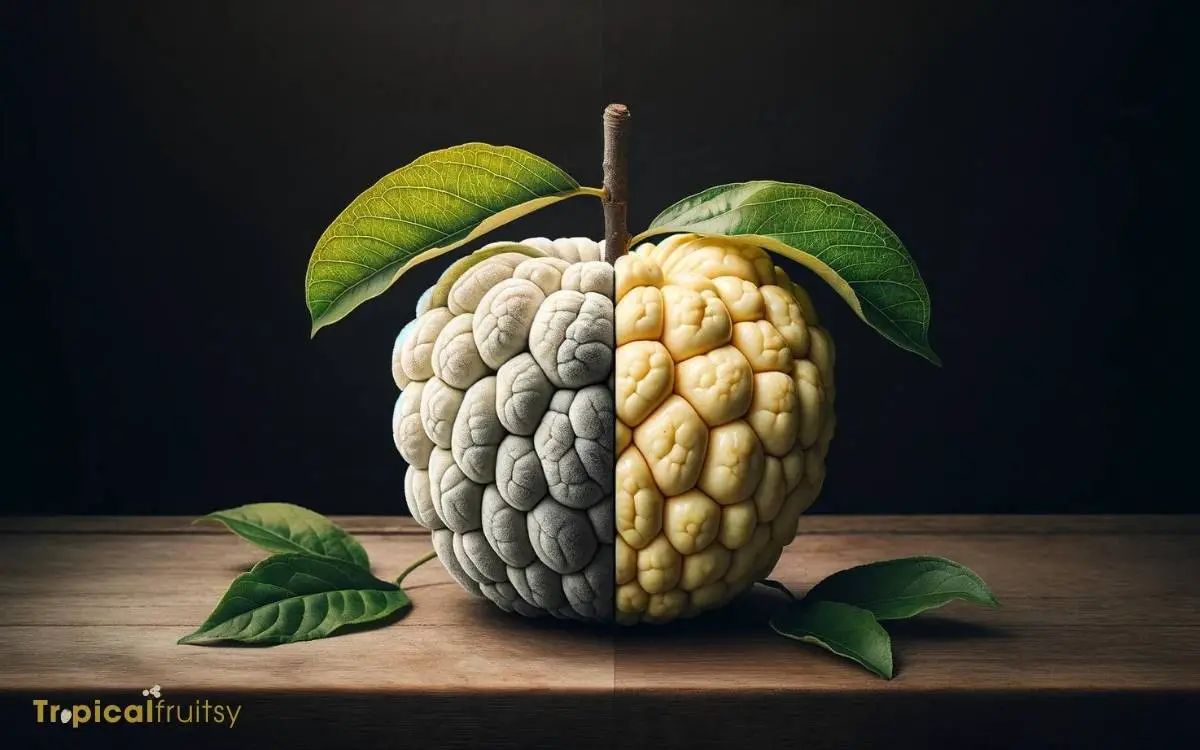
Key Takeaway
Top 10 Features: Sugar Apple vs Custard Apple
| Feature | Sugar Apple (Annona squamosa) | Custard Apple (Annona reticulata) |
|---|---|---|
| Appearance | Segmented, bumpy surface | Heart-shaped with a smooth texture |
| Seeds | Fewer, black | More, brown |
| Leaf Shape | Narrow, elongated | Broader, less elongated |
| Flavor | Very sweet | Milder sweetness |
| Texture | Grainy | Creamy, custard-like |
| Calories (100g) | Approx. 94 | Approx. 80 |
| Vitamin C (100g) | 36.3 mg | 20.6 mg |
| Culinary Uses | Fresh, desserts, shakes | Fresh, ice creams, sauces |
| Ideal Growing Conditions | Tropical, warm, humid | Tropical, needs shelter from wind |
| Seasonality | Late summer to fall | Fall to winter |
Origins and History
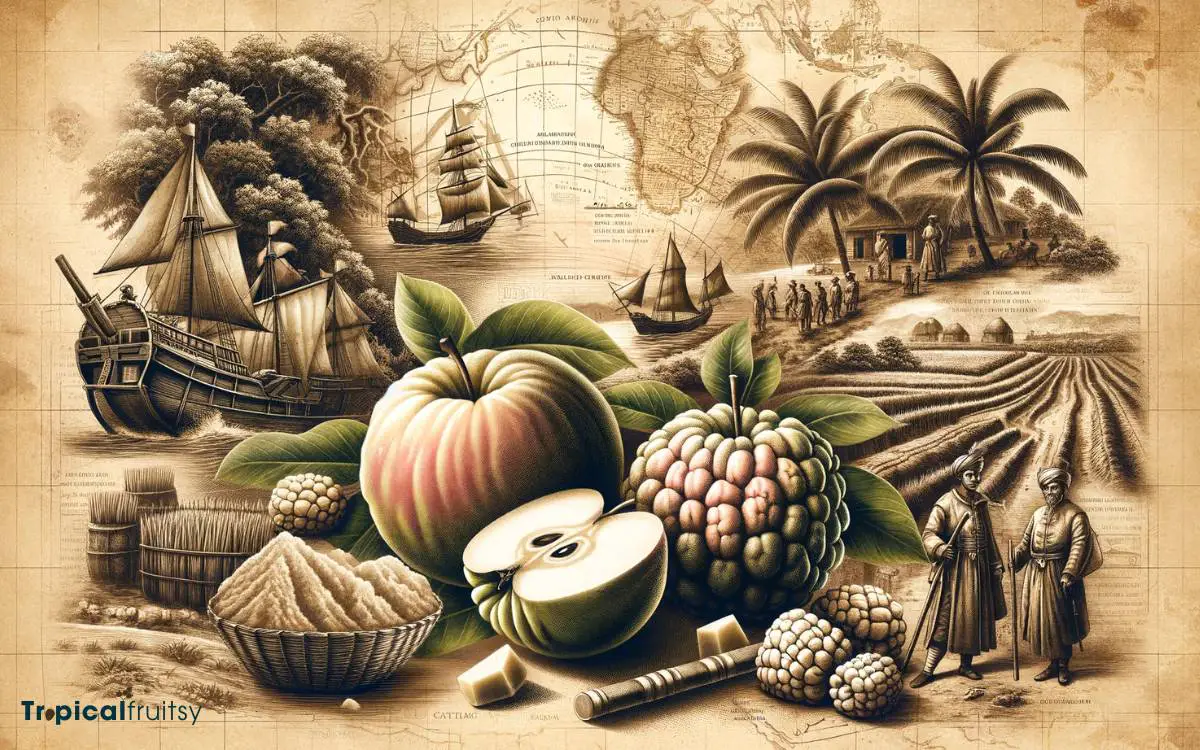
I’m tracing the origins of sugar apples back to the tropical Americas, while custard apples herald from parts of South Asia and the West Indies.
Analyzing historical records, I find that sugar apples, or Annona squamosa, were widely cultivated and dispersed by indigenous peoples before European colonization.
Custard apples, known as Annona reticulata, have a similar story, albeit with roots in different geographies.
The dissemination patterns reflect human migration and trade routes. It’s clear that both species became intertwined with local agrarian practices, adapting to various climatic zones within their regions.
Botanical Characteristics
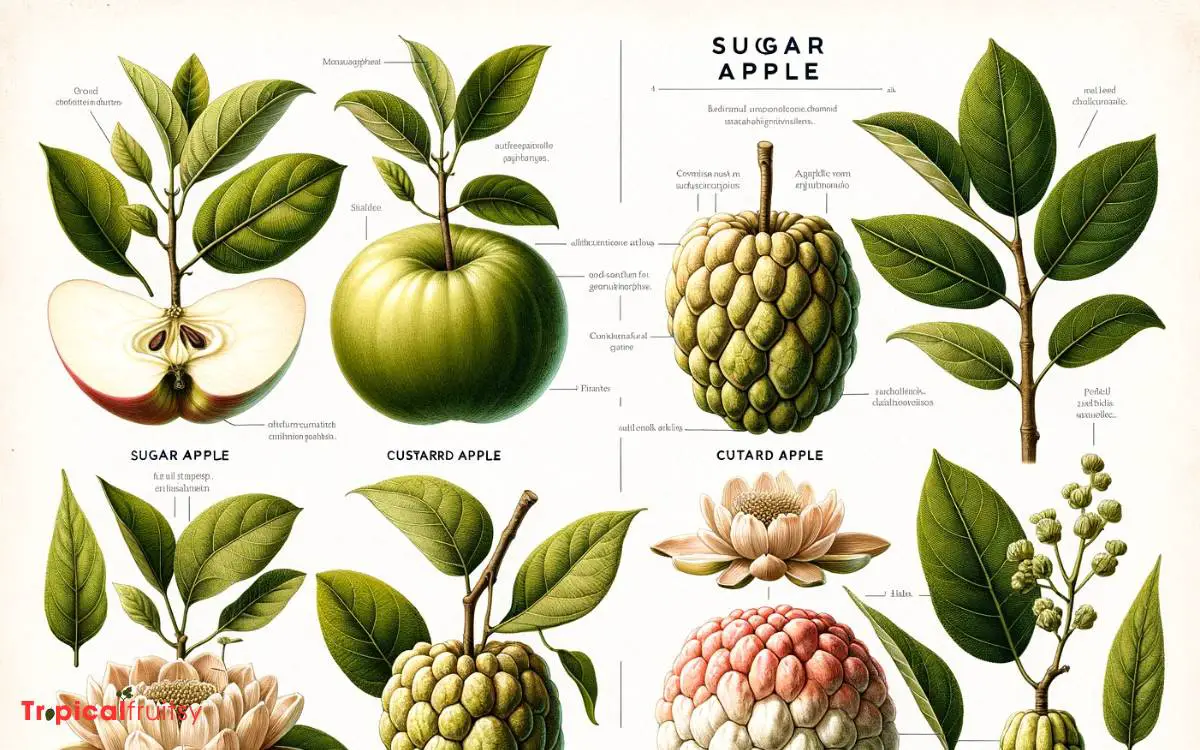
Moving on from their origins, I’ll now examine the distinct botanical characteristics of sugar apples and custard apples.
I’ll compare their leaf shapes, analyze the nuances in their flowering patterns, and describe the differences in fruit texture between the two species.
This comparison provides a clear differentiation, essential for understanding their unique identities in the plant kingdom.
Leaf Shape Differences
While examining the botanical characteristics of sugar apple and custard apple, I’ve noticed that their leaf shapes exhibit distinct differences.
Specifically, sugar apple leaves tend to be oblong or elliptic with a pointed tip and smooth margins, typically measuring between 5 to 17 centimeters in length. They’re somewhat thin with a pale green underside.
On the other hand, custard apple leaves are more variable but often broader and heart-shaped or obovate with a rounded base and pointy tip.
These leaves can grow larger, up to 20 centimeters long, and tend to have a more leathery texture with a blue-green hue beneath.
These variations in leaf morphology are significant identifiers for distinguishing between the two species in their respective habitats.
Flowering Patterns
Turning to the flowering patterns, I’ve observed that sugar apple flowers are borne singly or in clusters, whereas custard apple blossoms tend to emerge directly from the branches or trunk.
This distinction in flowering sites is more than a mere botanical curiosity; it reveals the nuanced strategies these plants employ for reproduction.
Sugar apple flowers exhibit a pendulous nature, enhancing their visibility to pollinators. Custard apple’s flowering directly on older wood (cauliflory) can support heavier fruit loads.
The timing of bloom in both can offer insights into pollinator behaviors and the interplay with local ecosystems.
Analyzing these patterns, it’s clear that each species has adapted its flowering strategy to optimize pollination success within its specific ecological niche. Understanding these patterns can influence horticultural practices and conservation efforts.
Fruit Texture Variations
Beyond their distinct flowering habits, I’ve noticed that sugar apples and custard apples also differ markedly in fruit texture, with the former typically having a grainier feel compared to the latter’s smoother flesh.
Delving into the botanical characteristics, the surface of the sugar apple (Annona squamosa) is composed of knobby segments that contribute to its slightly rougher texture.
These protuberances are less pronounced in the custard apple (Annona reticulata), which exhibits a more uniform skin leading to its creamier consistency.
The internal flesh of both fruits displays variations in granularity and fiber content. Sugar apples have a higher seed-to-pulp ratio, which affects the overall mouthfeel.
Custard apples, on the other hand, present a more homogenized texture, which is generally preferred for direct consumption.
Nutritional Profiles
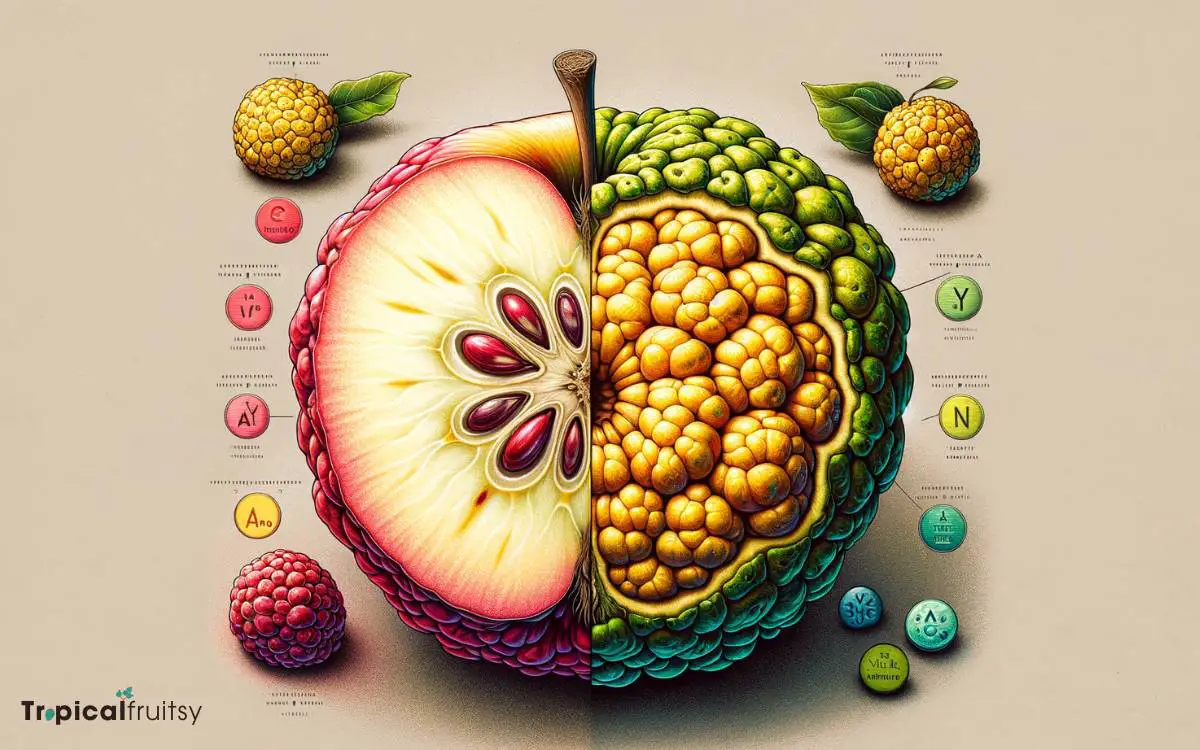
I’ll now compare the nutritional profiles of sugar apple and custard apple, highlighting their unique benefits and similarities. Both fruits are rich in vitamins and minerals, yet they have distinctive nutritional nuances.
- Vitamin C: Sugar apples boast a higher concentration of vitamin C, which is crucial for immune function and skin health.
- Dietary Fiber: Custard apples contain more dietary fiber, supporting digestion and potentially aiding in weight management.
- Caloric Content: Sugar apples have a slightly higher caloric content, which should be considered in diet planning.
Analyzing their nutrient density, it’s evident that both fruits offer essential nutrients, though their benefits are tailored to different health aspects.
Flavor and Texture
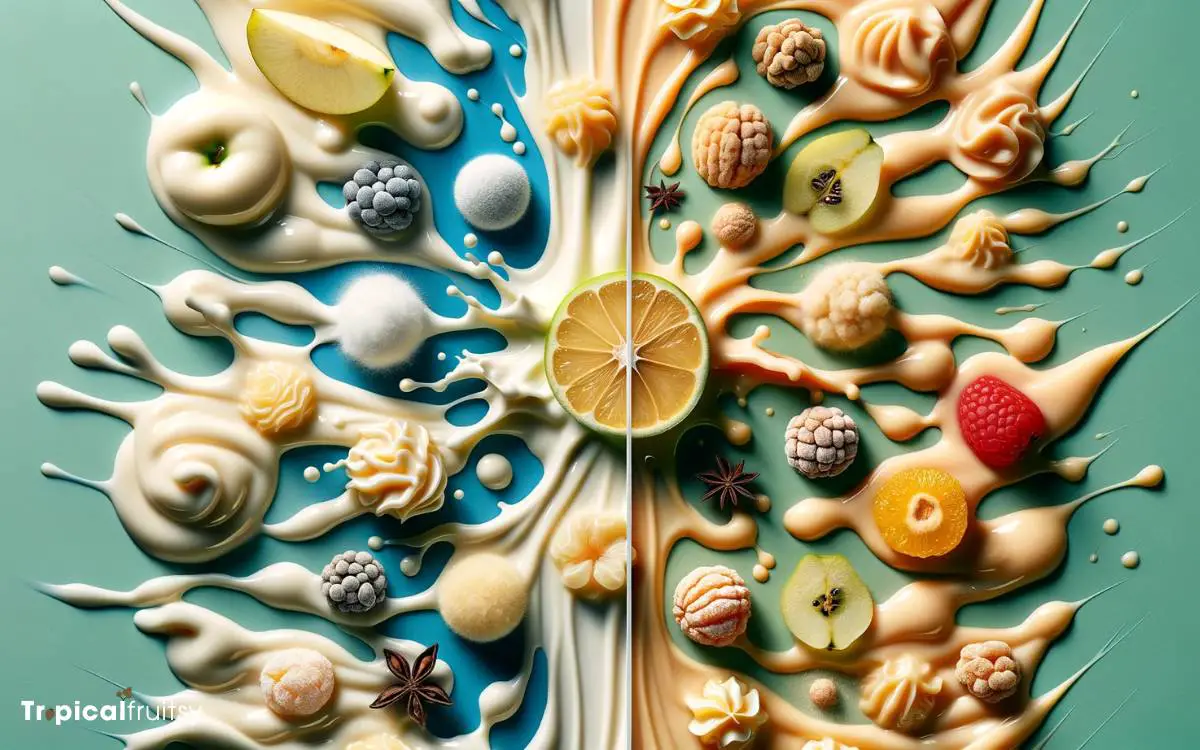
In comparing sugar apple and custard apple, I’ve found that beyond their nutritional value, the distinct flavors and textures of these fruits are what truly set them apart.
Sugar apples possess a sweet, slightly tangy flavor with a hint of vanilla, akin to a blend of pineapple and banana. The flesh is granular yet creamy, similar to custard, which breaks apart into segments easily.
Custard apples, on the other hand, have a milder sweetness with a rich, custard-like flavor. They’re less tangy than sugar apples and have a smooth, creamy texture that’s less granular.
Their flesh is more cohesive, making them somewhat easier to eat as it doesn’t segment like sugar apples.
Understanding these nuances can greatly enhance consumers’ appreciation and selection of these tropical delights.
Culinary Uses
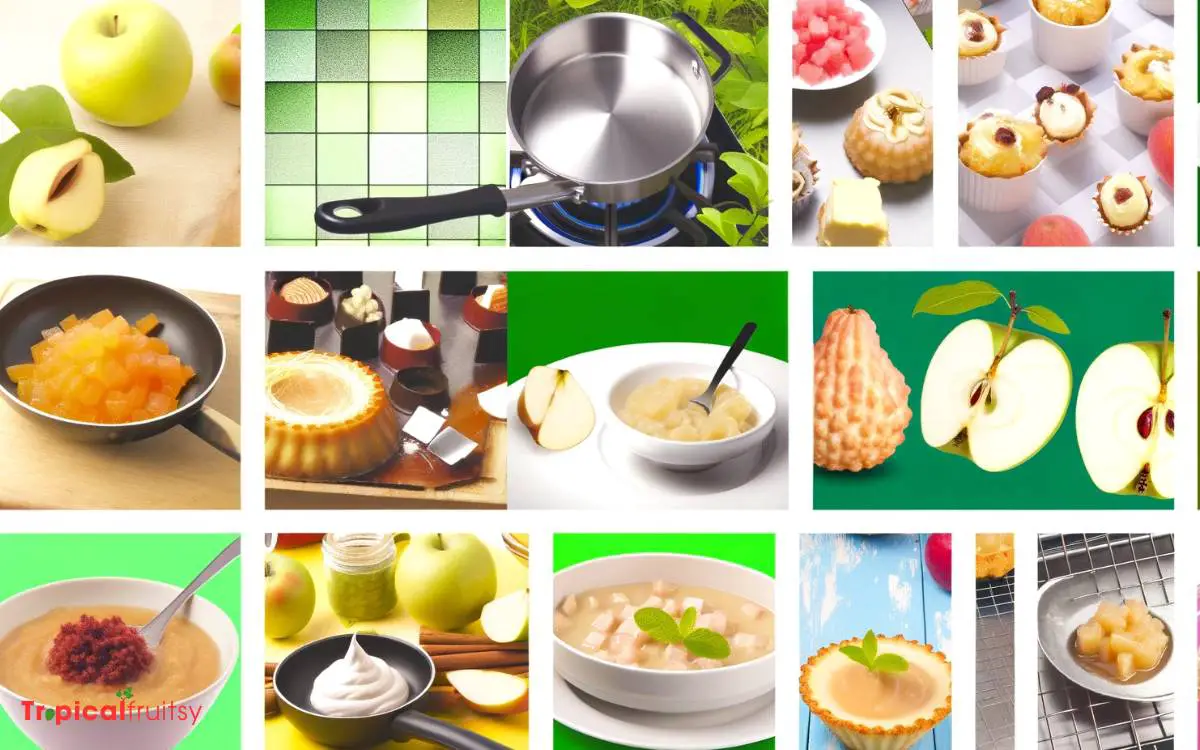
While exploring the culinary versatility of these fruits, I’ve discovered that sugar apples and custard apples can be used in a variety of dishes, from desserts to smoothies.
Both fruits impart a unique flavor profile and creamy texture that enhance the sensory experience of the dishes they’re incorporated into.
Here are three ways they can be featured:
- Desserts: They’re splendid in custards, tarts, and mousses, where their sweetness complements the richness of these dishes.
- Beverages: Blended into smoothies or shakes, they offer a thick, luxurious consistency and a burst of natural sweetness.
- Exotic Dishes: Chopped into salsas or salads, they provide a refreshing contrast to savory ingredients, creating a balance of flavors that’s both unexpected and delightful.
Health Benefits
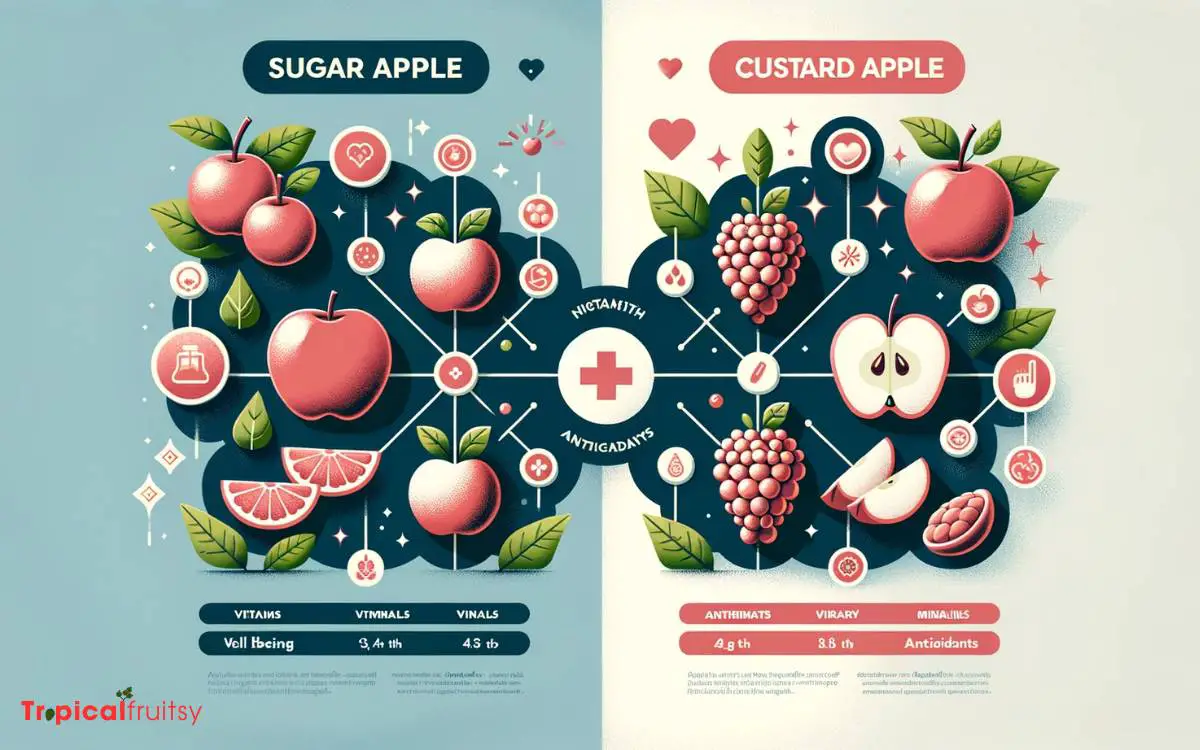
I’ll now examine the health benefits of sugar apples and custard apples by comparing their nutritional content.
Assessing their antioxidant properties will shed light on their potential role in preventing oxidative stress-related diseases.
Additionally, I’ll analyze the dietary fiber content in each fruit to understand their effects on digestive health.
Nutritional Content Comparison
I’ve discovered that both sugar apples and custard apples are rich in essential nutrients, though they each offer a unique set of health benefits.
My analysis of their nutritional content reveals:
- Vitamins: Sugar apples boast a higher concentration of vitamin C, promoting immune function and skin health, while custard apples provide a substantial amount of vitamin A, essential for vision and organ function.
- Minerals: Custard apples edge out with slightly more magnesium and potassium, which support heart health and muscle function.
- Dietary Fiber: Both fruits are excellent fiber sources, but custard apples typically have a bit more, aiding in digestion and blood sugar regulation.
Understanding these nuances is crucial for those aiming to tailor their diet for specific health outcomes.
Antioxidant Properties
In addition to their nutritional benefits, I’m intrigued by the rich antioxidant profiles of sugar apples and custard apples, which play a critical role in combating oxidative stress and supporting overall health.
Both fruits contain a variety of antioxidants, including vitamin C, flavonoids, and carotenoids.
These compounds are known to neutralize free radicals, thereby preventing cellular damage that can lead to chronic diseases such as cancer and cardiovascular disorders.
The antioxidants in these fruits also contribute to anti-inflammatory effects, which may offer protection against a range of health issues, including arthritis and neurodegenerative diseases.
By analyzing their specific antioxidant capacities, I can discern subtle differences in their potential health impacts.
Let’s now shift focus to examine how the dietary fiber content of these fruits compares.
Dietary Fiber Analysis
While exploring the nutritional profiles of sugar apples and custard apples, I’ve found that their dietary fiber content not only aids in digestion but also confers several other health benefits.
Here are the key advantages:
- Regularity: Fiber helps maintain bowel health and prevent constipation, enhancing gastrointestinal function.
- Blood Sugar Control: It moderates blood glucose levels by slowing the absorption of sugar, beneficial for managing diabetes.
- Cholesterol Management: Soluble fiber, found in these fruits, can help lower total blood cholesterol levels by reducing the absorption of cholesterol into the bloodstream.
These benefits underscore the importance of including fiber-rich fruits like sugar apples and custard apples in our diets.
Growing Conditions

How do sugar apples and custard apples differ in their preferred growing conditions?
As I delve into the agronomic requirements, I find that sugar apples, or Annona squamosa, thrive in tropical climates with well-drained, sandy to loamy soil.
They demand ample sunlight and are sensitive to cold, necessitating temperatures above freezing to prevent damage.
In contrast, custard apples, which encompass species like Annona reticulata, are more tolerant of varied conditions.
They can withstand slightly cooler temperatures and are less demanding regarding soil type, though they still prefer a warm climate.
Both species share the need for consistent moisture without waterlogging, yet sugar apples are more drought-tolerant once established.
It’s crucial to understand that while related, their distinct preferences influence cultivation practices and potential success in different regions.
Availability and Seasonality
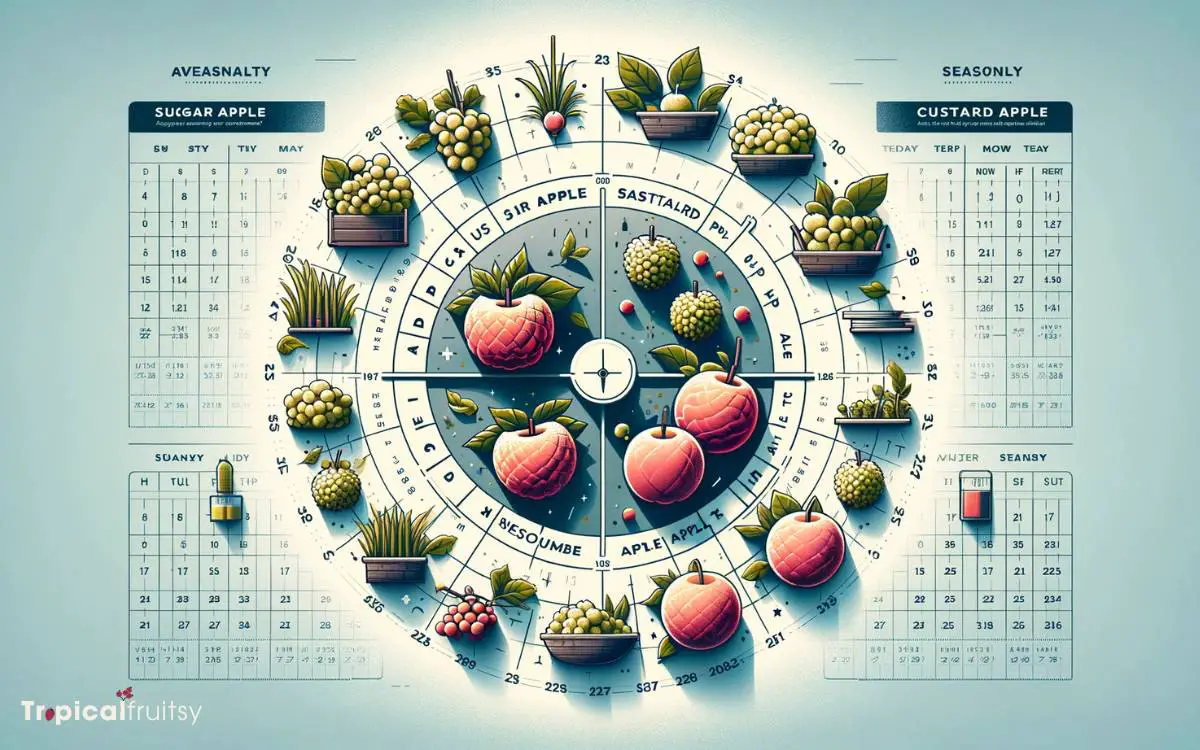
I’ve noticed that both sugar apples and custard apples are seasonally available, with sugar apples typically harvested in the late summer and fall, while custard apples come to market from winter through spring.
This periodicity affects their availability and can influence market prices and consumer demand.
- Anticipation: The limited harvest period for each fruit creates a sense of anticipation among aficionados, who eagerly await their seasonal appearance.
- Freshness: Seasonality ensures that the fruits reach consumers at peak freshness, which can greatly enhance flavor and nutritional value.
- Culinary Creativity: The alternating seasons of sugar apples and custard apples encourage culinary exploration, as chefs and home cooks adapt their recipes to incorporate the currently available fruit.
Understanding the seasonality of these fruits is crucial for consumers and businesses planning to purchase or sell them.
How to Choose and Store
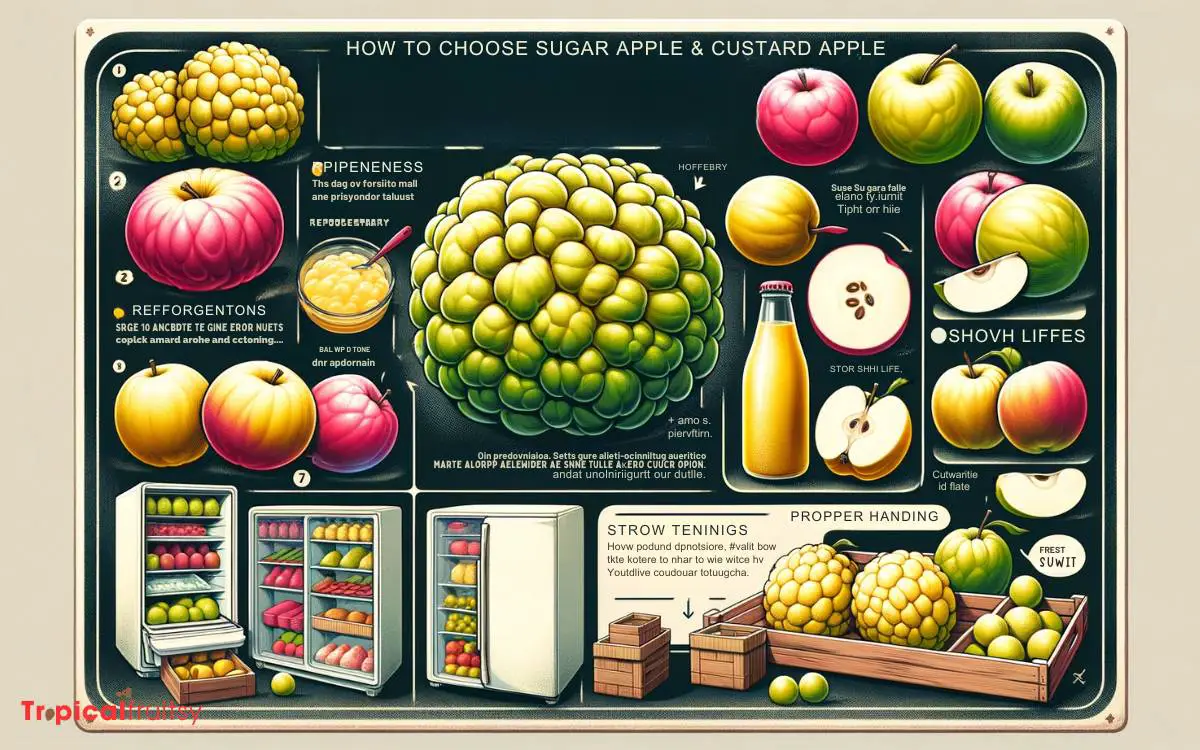
One must know the proper techniques for selecting and storing sugar apples and custard apples to ensure they enjoy these fruits at their best quality. I’ll focus on the attributes indicative of ripeness and the storage methods that preserve freshness.
When choosing sugar apples, I look for firm, unblemished skin and a slight give under pressure, signifying ripeness.
For custard apples, the presence of a slight yellowish tinge and a similar yielding to gentle pressure are markers of readiness for consumption.
In storage, I ensure both fruit types are kept at room temperature until they reach optimal ripeness.
Once ripe, I transfer them to the refrigerator to slow down the ripening process. This practice helps maintain their flavor and texture for a few days longer.
Conclusion
In my exploration of sugar apples and custard apples, I’ve unearthed a tapestry of tastes and textures as diverse as a botanist’s garden.
While their nutritional profiles offer a cornucopia of benefits, it’s their unique flavors that dance on the palate like sunlight through leaves.
Remember, like choosing the perfect fruit, selecting the right variety for your recipe can be the difference between a good dish and a great culinary masterpiece.
So, savor the choice and relish the flavors.



